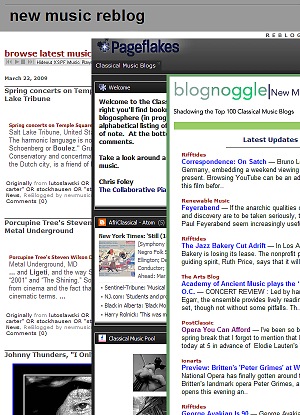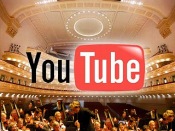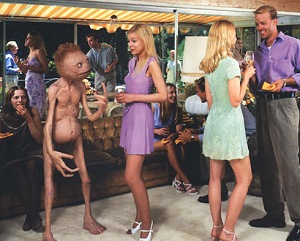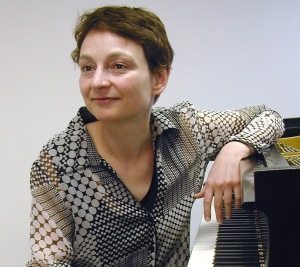
(Thanks to Kevin Austin, who runs the Canadian Electroacoustic Community e-mail list, for pointing this one out):
Every serious classical listener/collector has spent time probing through the hiss, pop and crackle of early monophonic 78 and 33 rpm recordings; though the sound is tinny and boxed in, they love the magical feeling of somehow being brought closer to some vital moment, performer or composer. Until 1958 people could only buy monophonic records; some might have heard stereo sound previously in a few push-the-envelope films like Fantasia, but for at least a couple generations mono was all they had. Yet there had been a number of experimental tries at stereo sound, going back as early as the 1920s (the BBC’s first attempt at a stereo radio broadcast was in December 1925). One of these pioneering experiments has been wonderfully documented on the Stokowski.org website.
Leopold Stokowski might have had a bit of the showman in him, often shrewdly picking music, concerts and events with a little more than average glitz and spectacle. But especially early on, we can’t forget that he was very friendly with a lot of the avant-garde of the day, and had a keen interest in new ideas. His Philadelphia Orchestra began broadcasting concerts in 1929, but he was disappointed with the poor fidelity. Stokowski approached Bell Labs looking for some way to improve the sound; there he hooked up with Bell’s legendary research director Dr. Harvey Fletcher. Fletcher was doing groundbreaking work on electrical recording, new microphones and recording equipment, constantly searching for ways to expand the frequency, dynamic range and spatial presence of recordings.
They worked out a deal where in 1931 Fletcher would install the latest equipment in the basement of the hall (the Academy of Music) that the Philly orchestra used for broadcasts, making the orchestra a test subject for their recording experiments. By the end of the year they were able to push the recorded spectrum all the way to an unheard-of 13,000 Hz (though still in mono) in a recording of Berlioz‘s Roman Carnival Overture.
But most amazing of all was the work of another of Fletcher’s researchers, Arthur C. Keller. He’d devised a system that could use two microphones at once, each cutting their own sound to a separate groove on the master disk. With this new stereophonic setup, in 1932 Keller recorded Stokowski and the orchestra performing Scriabin‘s Prometheus: Poem of Fire (part 1; part 2). As far as we know, this is the oldest stereophonic music recording in existence, and for all those lovers of the 78 rpm records from this period the quality is just stunning. It would still be more than a quarter-century before the technology could advance enough to where everyone could finally listen at home in stereo.
Arthur Keller came out of retirement in 1979, and assisted by Ward Marston made the modern transcriptions you hear here, from the original master disks stored at Bell Labs. All thanks to them, and to the folks at Stokowski.org for sharing the story (there’s plenty more to learn there too, so don’t forget to go check out the site).
 It’s sometimes said that composers are either German or French, and American vanguard one Frederic Rzewski, with his much vaunted admiration for Beethoven, is clearly on the German side. But how could he not be when some of his composition teachers like Dallapiccola and Babbitt forsook a flowing lyric line for a jagged dramatic one, whose aim is not to seduce the ear, but to wow with intellectual rigor? But that doesn’t mean that Rzewski’s work is insincere, or lacks power — it has that in spades — but that it tends to be aimed at the mind and not the heart. It’s often confrontational, too. But that’s a good thing because any real musical interaction, like any real human one, has a built in confrontational element, and confrontations help us grow.
It’s sometimes said that composers are either German or French, and American vanguard one Frederic Rzewski, with his much vaunted admiration for Beethoven, is clearly on the German side. But how could he not be when some of his composition teachers like Dallapiccola and Babbitt forsook a flowing lyric line for a jagged dramatic one, whose aim is not to seduce the ear, but to wow with intellectual rigor? But that doesn’t mean that Rzewski’s work is insincere, or lacks power — it has that in spades — but that it tends to be aimed at the mind and not the heart. It’s often confrontational, too. But that’s a good thing because any real musical interaction, like any real human one, has a built in confrontational element, and confrontations help us grow. Most S21 regulars know about these already, but for all our newer visitors I thought I’d mention how most of us keep on top of what’s what, day-to-day, in the classical and “non-pop” world. The secret is to visit a few of the aggregation sites intrepid volunteers have set up, that comb the news sites and blogs for current tidbits of interest. It’s really pretty easy on your part, requiring just three quick clicks (besides our humble and happy abode, of course!) once a day (or twice or thrice, even better):
Most S21 regulars know about these already, but for all our newer visitors I thought I’d mention how most of us keep on top of what’s what, day-to-day, in the classical and “non-pop” world. The secret is to visit a few of the aggregation sites intrepid volunteers have set up, that comb the news sites and blogs for current tidbits of interest. It’s really pretty easy on your part, requiring just three quick clicks (besides our humble and happy abode, of course!) once a day (or twice or thrice, even better): On this very page back in 2007, one of my ‘click picks’ told you about a
On this very page back in 2007, one of my ‘click picks’ told you about a  If you believe that the importance of the arts in these times is inversely proportional to the economic news, than there’s never been a better time for YouTube’s Symphony Orchestra. YouTube
If you believe that the importance of the arts in these times is inversely proportional to the economic news, than there’s never been a better time for YouTube’s Symphony Orchestra. YouTube  And our favorite crusty uncle, Seth Gordon, has word on a new-music Oscar tie-in that you may not be aware of: Yeah, yeah, we all know that the
And our favorite crusty uncle, Seth Gordon, has word on a new-music Oscar tie-in that you may not be aware of: Yeah, yeah, we all know that the  Just imagine the impression you will leave with your guests, as you drop sparkling bon mots on combinatoriality, pitch accumulators, harmelodics, and gradual phase shifting!… If they haven’t fled for the door yet…
Just imagine the impression you will leave with your guests, as you drop sparkling bon mots on combinatoriality, pitch accumulators, harmelodics, and gradual phase shifting!… If they haven’t fled for the door yet… I’ve been trying for maybe a more “genteel” word, but keep coming back to it… What I’m talking about is the composer, pianist and conductor
I’ve been trying for maybe a more “genteel” word, but keep coming back to it… What I’m talking about is the composer, pianist and conductor